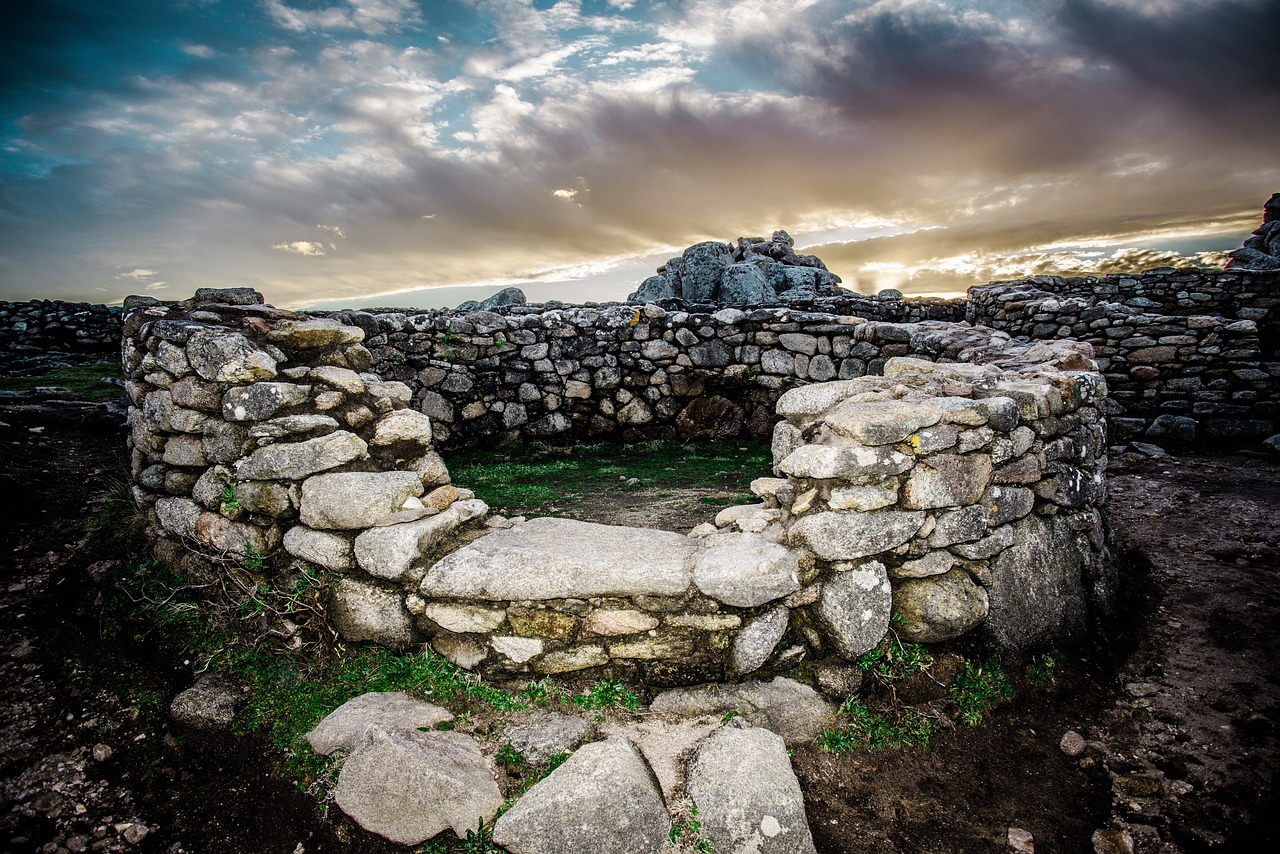The Influence of Ancient Sumerian Culture on Modern Society
Ancient Sumerian culture, with its rich tapestry of innovations and traditions, continues to cast a profound influence on modern society. From language and writing systems to architecture and urban planning, the legacy of the Sumerians resonates in various aspects of our contemporary world. Let's delve into the remarkable impact of this ancient civilization on the fabric of our modern existence.

Language and Writing Systems
The influence of ancient Sumerian culture on modern society is profound and far-reaching, touching various aspects of our daily lives that we may not even be aware of. One of the most significant contributions of the Sumerians is their development of the cuneiform writing system, considered one of the earliest writing systems in the world. This intricate system of wedge-shaped characters inscribed on clay tablets laid the foundation for written communication as we know it today. The legacy of Sumerian cuneiform can be seen in the evolution of writing systems over millennia, shaping the way we communicate, record information, and preserve knowledge.
Furthermore, the Sumerian language itself has left a lasting impact on modern linguistic studies. Scholars have traced linguistic connections between Sumerian and various contemporary languages, shedding light on the development of language families and linguistic evolution. The complexity and structure of the Sumerian language have provided valuable insights into the study of grammar, syntax, and phonetics, influencing the field of linguistics in profound ways.
In addition to the written word, the Sumerians also contributed to the development of storytelling and literature. Their myths, legends, and religious texts, recorded in cuneiform script, have inspired narratives and themes that continue to resonate in modern literature and popular culture. The rich tapestry of Sumerian mythology has woven its way into the fabric of storytelling traditions, influencing genres such as fantasy, science fiction, and epic poetry.
Overall, the Sumerian influence on language and writing systems is a testament to the enduring legacy of this ancient civilization. By delving into the origins of written communication and linguistic structures, we gain a deeper appreciation for the intricate web of connections that link us to our ancient past and shape the way we interact with the world today.

Religion and Mythology
Religion and mythology played a significant role in ancient Sumerian culture, shaping their beliefs and practices in profound ways. The Sumerians worshipped a pantheon of gods and goddesses, each associated with different aspects of life and nature. Their religious rituals and myths reflected their understanding of the world and their place in it.
One of the most notable contributions of Sumerian religion to modern society is the concept of the afterlife. The Sumerians believed in a complex underworld where souls were judged based on their deeds in life. This idea of a judgment after death has influenced many modern religions and their beliefs about morality and accountability.
Sumerian mythology also included epic tales such as the Epic of Gilgamesh, which is considered one of the earliest surviving works of literature. This epic poem explores themes of friendship, mortality, and the search for meaning in life, resonating with readers across cultures and centuries.
In terms of religious practices, the Sumerians engaged in elaborate ceremonies and offerings to appease their deities and ensure prosperity and protection. These rituals laid the foundation for many religious customs and traditions observed in various cultures around the world today.
Furthermore, the Sumerians' belief in divine intervention and the influence of gods on human affairs can be seen in modern storytelling, where themes of fate, destiny, and the supernatural continue to captivate audiences in literature, film, and other forms of media.

Architecture and Urban Planning
When we delve into the realm of ancient Sumerian culture, one cannot overlook the remarkable advancements in architecture and urban planning that have left an indelible mark on modern society. The Sumerians, often credited as the first civilization, pioneered architectural techniques that laid the foundation for urban development as we know it today. Their innovative approach to construction and city planning continues to influence contemporary architectural practices and urban design.
One of the most striking features of Sumerian architecture was the development of the ziggurat, a massive stepped temple tower that served as the focal point of religious and civic life in Sumerian cities. These imposing structures, built with sun-dried mud bricks, showcased the Sumerians' engineering prowess and their commitment to monumental construction projects. The ziggurats not only symbolized the connection between heaven and earth but also demonstrated the Sumerians' mastery of architectural design.
Moreover, the Sumerians were adept city planners, laying out their urban centers in a grid-like pattern with well-defined streets, squares, and public buildings. This meticulous approach to urban planning facilitated efficient movement within the city and organized the various functions of urban life. The concept of zoning, separating residential areas from commercial and administrative zones, can be traced back to Sumerian city planning principles.
Furthermore, the Sumerians' use of advanced irrigation techniques, such as canals and levees, not only supported their agricultural endeavors but also influenced the layout of their cities. The careful management of water resources allowed for the sustenance of large urban populations and the development of thriving city-states. The integration of water management systems into urban design became a hallmark of Sumerian city planning and a model for future civilizations.
In essence, the legacy of Sumerian architecture and urban planning endures in the modern world, shaping the way we conceptualize and construct our cities. The principles of order, functionality, and aesthetic appeal that guided the Sumerians in their architectural endeavors continue to inform contemporary architectural practices and urban development projects. By studying the architectural achievements of ancient Sumeria, we gain insights into the origins of urban civilization and the enduring impact of innovative design and planning.

Legal Systems and Governance
Legal systems and governance in ancient Sumeria laid the foundation for modern legal frameworks and governance structures. The Sumerians were among the first to establish written laws and codes to regulate society and resolve disputes. One of the most notable contributions of Sumerian legal systems was the development of the Code of Ur-Nammu, dating back to around 2100 BC. This code is considered one of the earliest known legal documents in history, predating even the famous Code of Hammurabi. The Code of Ur-Nammu addressed various aspects of daily life, including family law, property rights, and criminal offenses, providing a structured system of justice for the Sumerian society.
Moreover, the concept of governance in ancient Sumeria revolved around city-states ruled by kings who were believed to have been appointed by the gods. These rulers not only held political power but also served as religious figures, embodying the connection between the earthly and divine realms. The Sumerian kingship was characterized by a strong centralized authority that oversaw administrative functions, maintained order, and ensured the well-being of the populace. This model of governance influenced subsequent civilizations and contributed to the development of monarchies and centralized governments around the world.
Furthermore, the Sumerians established institutions to administer justice and uphold the rule of law. They had a complex judicial system that included judges, legal advisors, and scribes responsible for recording legal proceedings. Disputes were resolved through legal proceedings where evidence was presented, witnesses were called upon, and judgments were based on established laws. This emphasis on legal procedures and accountability set a precedent for fair and impartial governance, shaping the principles of justice and equity that are still upheld in modern legal systems.
In addition to legal matters, governance in ancient Sumeria extended to economic regulation and public infrastructure. The Sumerian rulers were responsible for overseeing trade agreements, managing taxation, and organizing labor for public projects such as irrigation systems and city construction. This centralized control of economic activities and public works reflected the Sumerian belief in the king's role as the steward of the land and the people. The legacy of Sumerian governance can be seen in contemporary governments that exercise authority over economic policies, public services, and regulatory frameworks to ensure the welfare and prosperity of their citizens.

Trade and Economics
Trade and Economics in ancient Sumeria were not merely transactions of goods and services but a fundamental aspect of their societal structure and advancement. The Sumerians were pioneers in establishing a complex economic system that involved trade networks, currency, and market specialization. Their strategic location between the Tigris and Euphrates rivers enabled them to engage in extensive trade with neighboring regions, exchanging goods such as grains, textiles, and precious metals.
One of the most remarkable contributions of the Sumerians to modern economics was the development of the earliest known form of writing, cuneiform, which facilitated record-keeping and accounting in trade transactions. This innovation laid the foundation for efficient business practices and paved the way for the evolution of written communication in economic activities.
The Sumerians also introduced the concept of standardized weights and measures to ensure fair trade and prevent fraud. These uniform standards not only promoted trust among traders but also established a basis for consistent pricing and valuation of goods, a practice still prevalent in contemporary economic systems.
Moreover, the Sumerian economy thrived on a barter system where goods were exchanged for other goods or services without the need for a common currency. This practice of bartering fostered interdependence among communities and encouraged specialization in various crafts and industries, leading to the diversification of economic activities.
Additionally, the Sumerians were adept at irrigation techniques, utilizing canals and levees to harness water resources for agricultural productivity. This agricultural surplus not only supported the growing population but also enabled the Sumerians to engage in long-distance trade and establish economic dominance in the region.
Furthermore, the Sumerian economy was characterized by the presence of marketplaces where merchants gathered to buy and sell goods, negotiate prices, and forge business agreements. These bustling market centers served as hubs of economic activity and cultural exchange, attracting traders from distant lands and fostering a cosmopolitan atmosphere.
In conclusion, the legacy of Sumerian trade and economics resonates in modern society through its influence on commercial practices, financial systems, and global trade networks. The innovative economic strategies and principles developed by the ancient Sumerians continue to shape the economic landscape of the contemporary world, highlighting the enduring impact of this ancient civilization on modern economic thought and prosperity.

Agriculture and Irrigation
Agriculture and irrigation were fundamental aspects of ancient Sumerian society, shaping their civilization and influencing modern farming practices. The Sumerians were pioneers in agriculture, developing innovative techniques that revolutionized food production. One of their most significant contributions was the implementation of irrigation systems to support crop cultivation in the arid Mesopotamian region. By constructing canals and channels to divert water from the Tigris and Euphrates rivers, the Sumerians were able to transform barren lands into fertile fields, ensuring a stable food supply for their growing population.
Furthermore, the Sumerians introduced the concept of crop rotation, allowing for the continuous cultivation of different crops to maintain soil fertility. This practice not only increased agricultural productivity but also laid the foundation for sustainable farming methods still used today. The use of plows and sickles made of copper and later bronze improved efficiency in planting and harvesting, setting a precedent for agricultural tools that would evolve over time.
The surplus agricultural produce generated by the Sumerians enabled the growth of urban centers and the development of a thriving economy based on trade and commerce. Their agricultural innovations not only sustained their own civilization but also influenced neighboring societies and future civilizations in the region. The legacy of Sumerian agriculture lives on in modern farming practices, emphasizing the importance of irrigation, crop diversity, and sustainable land management.

Art and Craftsmanship
Art and craftsmanship were highly esteemed in ancient Sumerian society, reflecting their advanced skills and creativity. The Sumerians excelled in various art forms, including sculpture, pottery, jewelry making, and metalwork. Their artistic expressions often depicted scenes from daily life, mythology, and religious beliefs, showcasing a deep connection to their cultural heritage. Intricate details and symbolic representations were common in Sumerian art, illustrating their attention to aesthetics and storytelling through visual mediums.
One of the remarkable aspects of Sumerian craftsmanship was their mastery of clay pottery. Sumerian pottery was not only utilitarian but also served as a canvas for artistic expression. Intricate designs, geometric patterns, and elaborate motifs adorned their pottery, showcasing the skill and creativity of Sumerian artisans. These pottery pieces not only served practical purposes but also held symbolic meanings, reflecting the cultural values and beliefs of the society.
Sumerian jewelry craftsmanship was another area where their artistry shone brightly. Gold, silver, lapis lazuli, and other precious materials were meticulously crafted into intricate jewelry pieces, reflecting the wealth and social status of the wearer. These jewelry items were not only decorative but also held symbolic significance, often representing religious beliefs, social status, or personal adornment. The craftsmanship and attention to detail in Sumerian jewelry set a high standard for artistic expression in adornment.
Furthermore, Sumerian sculpture was a prominent form of artistic expression, with statues and reliefs depicting gods, rulers, and mythical creatures. The Sumerians were skilled in sculpting both large-scale statues and small figurines, showcasing their ability to capture human and animal forms with precision and artistry. These sculptures served not only as decorative pieces but also as symbols of power, religious devotion, and cultural identity, embodying the artistic prowess of the Sumerian civilization.
In conclusion, Sumerian art and craftsmanship played a significant role in shaping the cultural landscape of the ancient world. Their artistic legacy continues to influence modern artistic expressions and design, showcasing the enduring impact of Sumerian creativity and skill on contemporary art forms.

Mathematics and Astronomy
Exploring the realm of Mathematics and Astronomy in ancient Sumeria unveils a profound influence that has transcended time and space, shaping the very fabric of modern scientific advancements and technologies. The Sumerians, with their innovative spirit and keen observational skills, laid the foundation for mathematical concepts and astronomical knowledge that continue to resonate in contemporary society.
The Sumerians' mathematical prowess was evident in their development of a sophisticated numerical system based on the sexagesimal system, which forms the basis of our modern division of time and angles. Their contributions to geometry, algebra, and arithmetic not only facilitated practical applications in trade and construction but also paved the way for complex mathematical theories that underpin modern scientific disciplines.
Moreover, the Sumerians' fascination with the celestial realm led to significant advancements in astronomy. Their meticulous observations of the stars, planets, and celestial events enabled them to create one of the earliest recorded star catalogs, laying the groundwork for future astronomical studies. The invention of the zodiac and the development of a lunar calendar demonstrated their deep understanding of celestial movements and cycles.
Furthermore, the Sumerians' astronomical knowledge was intertwined with their religious beliefs, as they perceived the heavens as a realm inhabited by powerful deities whose actions influenced human affairs. This interconnectedness of mathematics, astronomy, and spirituality in Sumerian culture highlights the holistic approach they took towards understanding the universe.
As we gaze upon the night sky or engage in complex mathematical calculations, we are unknowingly perpetuating the legacy of the ancient Sumerians, whose intellectual curiosity and thirst for knowledge continue to inspire and inform our modern scientific endeavors.

Social Structure and Gender Roles
Exploring the social structure and gender roles of ancient Sumeria offers a fascinating glimpse into the foundations of modern societal norms. In Sumerian society, a hierarchical structure was prevalent, with kings and priests holding the highest positions of power and influence. The division of labor was also pronounced, with distinct roles for men and women. While men primarily engaged in activities such as agriculture, trade, and governance, women played essential roles in domestic duties and childcare.
Moreover, gender roles in Sumeria were not rigidly defined, as women could also participate in economic activities and hold positions of authority in certain circumstances. This flexibility in gender roles contrasts with some modern societies, where traditional gender norms are more strictly enforced. The Sumerians valued the contributions of both men and women to the functioning of their society, recognizing the importance of diversity and collaboration in achieving communal goals.
Additionally, the concept of gender equality in ancient Sumeria extended to legal rights and responsibilities. Women had the right to own property, engage in business transactions, and seek legal recourse in case of disputes. This level of autonomy and agency for women was progressive for its time and laid the groundwork for future advancements in women's rights and empowerment.
Furthermore, the social structure of Sumerian society was intricately connected to religious beliefs and practices. The role of priests and priestesses in religious ceremonies and rituals influenced societal norms and behaviors. The Sumerians believed in the importance of maintaining harmony with the gods through various offerings and rituals, shaping the moral and ethical framework of their community.
In conclusion, the social structure and gender roles in ancient Sumeria provide valuable insights into the evolution of modern societal structures and gender dynamics. By studying the cultural practices and norms of the Sumerians, we can gain a deeper understanding of the complexities of human societies and the enduring impact of ancient civilizations on contemporary life.
Frequently Asked Questions
- What is the significance of Ancient Sumerian culture in modern society?
Ancient Sumerian culture holds immense significance in modern society as it laid the foundation for various aspects of human civilization such as language, writing systems, religion, architecture, legal systems, trade, agriculture, art, mathematics, astronomy, social structure, and gender roles.
- How did Sumerian writing systems influence modern communication methods?
The invention of cuneiform by the Sumerians marked the beginning of recorded history and greatly influenced the development of writing systems. This innovation paved the way for modern writing and communication methods, shaping the way we document information and share knowledge today.
- What role did Sumerian religion and mythology play in shaping modern cultural practices?
Sumerian religious beliefs and myths have left a lasting impact on modern religions and cultural practices. Many concepts and stories from Sumerian mythology have been adapted and integrated into various belief systems, influencing rituals, traditions, and cultural expressions around the world.
- How did Sumerian architectural innovations influence modern city planning?
The architectural achievements of ancient Sumeria, such as ziggurats and advanced urban planning, set a precedent for future civilizations. Their innovative designs and city layouts have inspired modern urban planners and architects in creating functional and sustainable cities.
- What impact did Sumerian legal systems have on modern governance structures?
The early legal systems developed in Sumer served as a basis for modern legal frameworks and governance structures. Concepts like codified laws, judicial systems, and administrative practices pioneered by the Sumerians continue to influence how societies govern themselves today.
- How did Sumerian agricultural techniques influence modern farming practices?
The agricultural innovations of the Sumerians, including irrigation systems and crop cultivation methods, revolutionized food production. These techniques have been adopted and improved upon over time, shaping modern farming practices and ensuring food security for growing populations.
- What is the legacy of Sumerian art and craftsmanship in modern artistic expressions?
Sumerian art forms and craftsmanship showcased intricate designs and skilled workmanship that continue to inspire contemporary artists and designers. The legacy of Sumerian art can be seen in various art movements, architectural styles, and creative expressions across different cultures.
- How did Sumerian mathematical and astronomical knowledge impact modern scientific advancements?
The mathematical and astronomical knowledge of the Sumerians laid the groundwork for scientific progress in fields such as mathematics, astronomy, and technology. Their contributions, such as the invention of the wheel and the development of the calendar, have influenced modern scientific advancements and technological innovations.
- What insights do Sumerian social structure and gender roles provide into modern societal norms?
Examining the social hierarchy and gender dynamics in ancient Sumeria offers valuable insights into the evolution of modern societal norms and structures. The roles and relationships observed in Sumerian society shed light on the complexities of human interactions and the development of social systems over time.



















